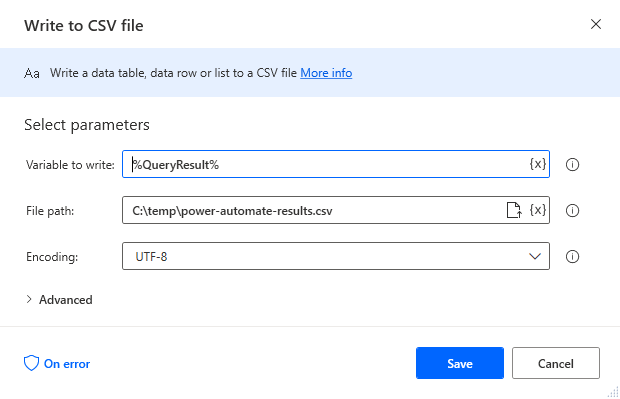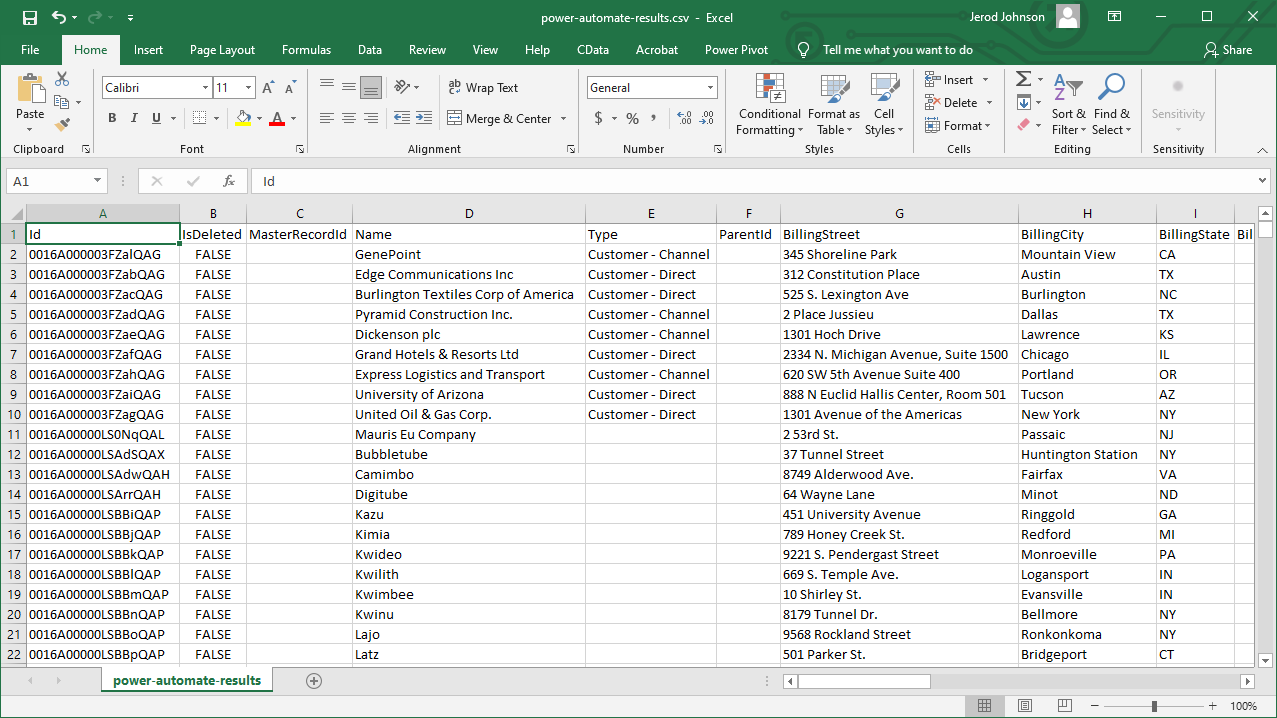Discover how a bimodal integration strategy can address the major data management challenges facing your organization today.
Get the Report →How to Access Live SQL Analysis Services Data in Power Automate Desktop via ODBC
The CData ODBC Driver for SQL Analysis Services enables you to integrate SQL Analysis Services data into workflows built using Microsoft Power Automate Desktop.
The CData ODBC Driver for SQL Analysis Services enables you to access live SQL Analysis Services data in workflow automation tools like Power Automate. This article shows how to integrate SQL Analysis Services data into a simple workflow, moving SQL Analysis Services data into a CSV file.
Through optimized data processing, CData ODBC Drivers offer unmatched performance for interacting with live SQL Analysis Services data in Microsoft Power Automate. When you issue complex SQL queries from Power Automate to SQL Analysis Services, the driver pushes supported SQL operations, like filters and aggregations, directly to SQL Analysis Services and utilizes the embedded SQL engine to process unsupported operations client-side (e.g. SQL functions and JOIN operations).
Connect to SQL Analysis Services as an ODBC Data Source
If you have not already, first specify connection properties in an ODBC DSN (data source name). This is the last step of the driver installation. You can use the Microsoft ODBC Data Source Administrator to create and configure ODBC DSNs.
To connect, provide authentication and set the Url property to a valid SQL Server Analysis Services endpoint. You can connect to SQL Server Analysis Services instances hosted over HTTP with XMLA access. See the Microsoft documentation to configure HTTP access to SQL Server Analysis Services.
To secure connections and authenticate, set the corresponding connection properties, below. The data provider supports the major authentication schemes, including HTTP and Windows, as well as SSL/TLS.
-
HTTP Authentication
Set AuthScheme to "Basic" or "Digest" and set User and Password. Specify other authentication values in CustomHeaders.
-
Windows (NTLM)
Set the Windows User and Password and set AuthScheme to "NTLM".
-
Kerberos and Kerberos Delegation
To authenticate with Kerberos, set AuthScheme to NEGOTIATE. To use Kerberos delegation, set AuthScheme to KERBEROSDELEGATION. If needed, provide the User, Password, and KerberosSPN. By default, the data provider attempts to communicate with the SPN at the specified Url.
-
SSL/TLS:
By default, the data provider attempts to negotiate SSL/TLS by checking the server's certificate against the system's trusted certificate store. To specify another certificate, see the SSLServerCert property for the available formats.
You can then access any cube as a relational table: When you connect the data provider retrieves SSAS metadata and dynamically updates the table schemas. Instead of retrieving metadata every connection, you can set the CacheLocation property to automatically cache to a simple file-based store.
See the Getting Started section of the CData documentation, under Retrieving Analysis Services Data, to execute SQL-92 queries to the cubes.
When you configure the DSN, you may also want to set the Max Rows connection property. This will limit the number of rows returned, which is especially helpful for improving performance when designing workflows.
Integrate SQL Analysis Services Data into Power Automate Workflows
After configuring the DSN for SQL Analysis Services, you are ready to integrate SQL Analysis Services data into your Power Automate workflows. Open Microsoft Power Automate, add a new flow, and name the flow.

In the flow editor, you can add the actions to connect to SQL Analysis Services, query SQL Analysis Services using SQL, and write the query results to a CSV document.
Add an Open SQL Connection Action
Add an "Open SQL connection" action (Actions -> Database) and configure the properties.
- Connection string: DSN=CData SQL Analysis Services Source
After configuring the action, click Save.

Add an Execute SQL Statement Action
Add an "Execute SQL statement" action (Actions -> Database) and configure the properties.
- Get connection by: SQL connection variable
- SQL connection: %SQLConnection% (the variable from the "Open SQL connection" action above)
- SQL statement: SELECT * FROM Adventure_Works
After configuring the action, click Save.

Add a Write to CSV File Action
Add a "Write to CSV file" action (Actions -> File) and configure the properties.
- Variable to write to: %QueryResult% (the variable from the "Execute SQL statement" action above)
- File path: set to a file on disk
- Configure Advanced settings as needed.
After configuring the action, click Save.

Add a Close SQL Connection Action
Add a "Close SQL connection" action (Actions -> Database) and configure the properties.
- SQL Connection: %SQLConnection% (the variable from the "Open SQL connection" action above)
After configuring the action, click Save.

Save & Run the Flow
Once you have configured all the actions for the flow, click the disk icon to save the flow. Click the play icon to run the flow.

Now you have a workflow to move SQL Analysis Services data into a CSV file.

With the CData ODBC Driver for SQL Analysis Services, you get live connectivity to SQL Analysis Services data within your Microsoft Power Automate workflows.
Related Power Automate Articles
This article walks through using the CData ODBC Driver for SQL Analysis Services with Power Automate Desktop. Check out our other articles for more ways to work with Power Automate (Desktop & Online):






